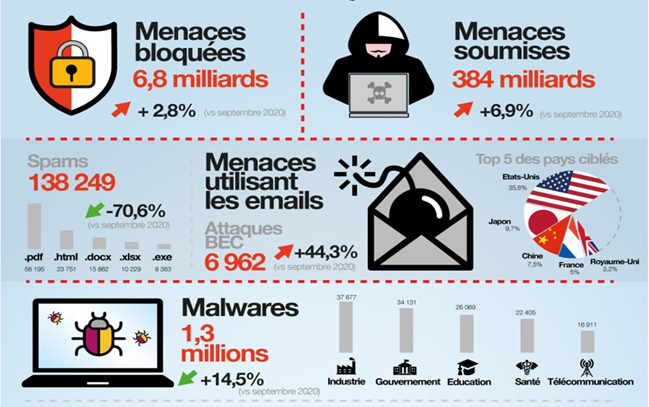Threats submitted are estimated at over 384 billion, up 6.9% on September 2020. While the number of threats tends to increase between September and October, malware is down by 14.5%. These threats still particularly affect industry, government organizations and education. In the global rankings of the most targeted countries, we find the United States in first place, followed by Japan and India. France ranks 5th, behind Italy. Finally, ransomware - software that takes personal data hostage - fell by 16% to no less than 2.4 million last October. Nurfedin Zejnulahi explains, however, that "attacks linked to the WCRY ransomware have surged, targeting government institutions in particular."
Email threats on the rise
In October, Trend Micro noted a 70.6% decrease in spam, but an increase in the number of threats using email. In September and October 2020, they jumped by over 44%. Businesses in particular are targeted by BEC attacks. These are fraudulent e-mails sent to victims' professional e-mail accounts. The aim of this type of threat is to trick the victim into thinking that it is an e-mail from a company executive. It invites the victim to make a transfer in the course of company business, or to transmit personal information. With many employees telecommuting, attackers take advantage of this situation to exploit various security loopholes. It is also worth noting that threats targeting home networks rose sharply, by 15.7% between September and October. Inbound attacks target NAS servers first, then computers, and finally smartphones.



